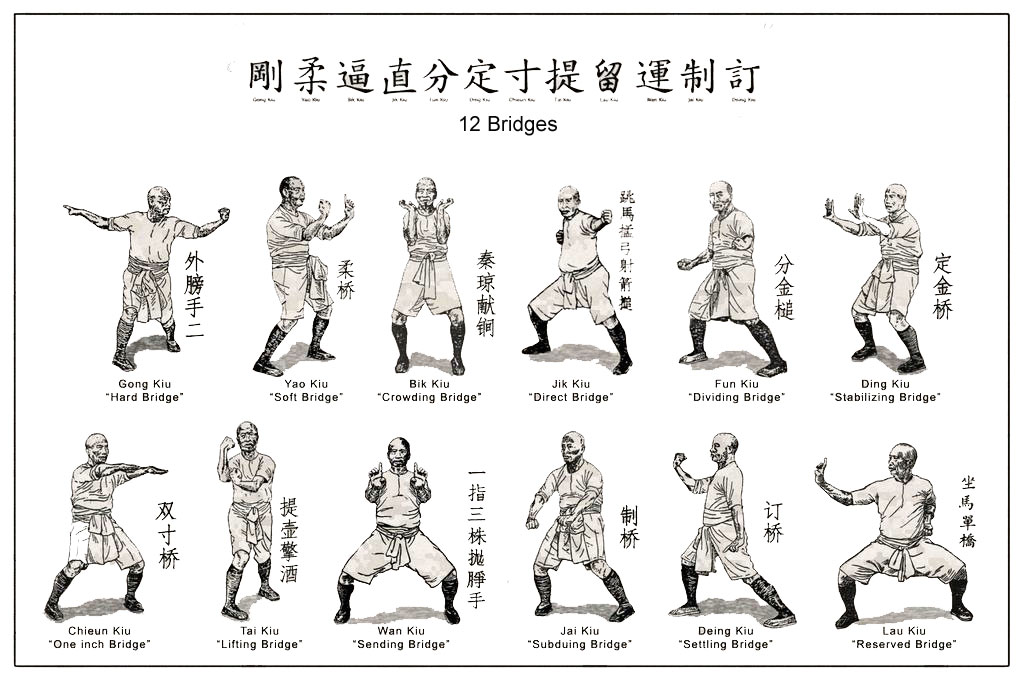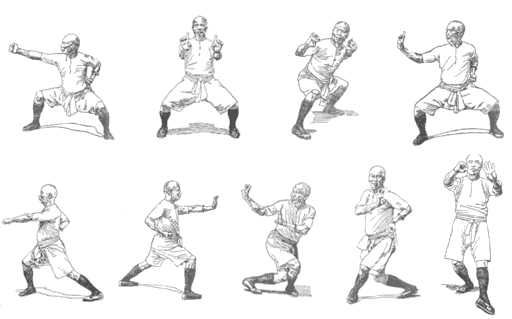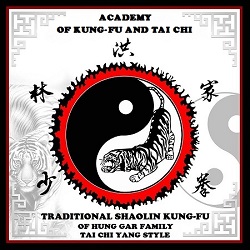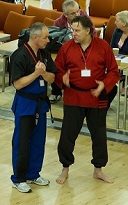Kung Fu Sui Lam Hung-Gar Khin
About Hung Gar
Many Chinese martial arts consider themselves heirs to the techniques of the Shaolin monastery. If, in many cases, progeny may appear questionable, in others it seems much more likely. This includes the hung gar, also known as the "tiger and crane boxing". This martial art of recognized efficacy owes not only its reputation to this origin, but also to Wang Fei Hung who gave it his letters of noblesses.
Hung Gar is a traditional Chinese martial arts system, the most widespread of the five prevalent southern systems. Its origin is from the "fighting monks" of the first Shaolin Temple in Henan province.
Hung Gar is primarily a tiger style, but also incorporates techniques from the other animal. So, Hung Gar has its roots in the Shaolin form of kung fu and its five animal styles: dragon, tiger, crane, snake and leopard.
The Practice of Hung Gar
This southern Chinese kung fu style incorporates both external and internal methods. Hung Gar emphasizes strong stances, long and short hand techniques, which encompasses straight, circular, and angular movements. The intent is to develop efficiency of movement, as well as coordination. This result in superior inside maneuvers, none more evident than the variation of kicks, mostly executed below the waist. Although the execution of movement appears to be hard, this system, in fact, incorporates both hard and soft techniques in a multitude of directions. The execution of advanced techniques is complex. Research has determined that Hung Gar possesses more intricate hand techniques and stance maneuvers than any other traditional system from China. Because it is also an internal system, it boasts many health benefits.
Strong low stances and powerful punches are a staple of Hung Gar. In addition, correct breathing (strong and clear, but not necessarily fast) is important in the system as well. That said, each sub style of Hung Gar has its own specific differences.
Forms, self-defense, and weapons are taught within the majority of Hung Gar systems. Both hard and soft techniques are practiced; although many look at Hung Gar as a hard style. Generally, like other kung fu styles, it encompasses the five animals, five elements, and 12 bridges.

Learning Hung Gar Kung Fu
Hung Gar uses various stances, but the horse stance is a basic position from which you can practice many of the style´s techniques. Strong stances provide a foundation for good kung fu technique. In addition, practicing the horse stance develops balance.

Practice holding this stance for longer and longer periods of time. In traditional hung gar training, students are required to stay in horse stance for long periods of time, up to one hour or more.
force is a foundation of hung gar training. Tense the forearms, elbows and triceps, which will help you deliver power in each punch. Practice striking while standing in horse stance.
There are several hand forms in hung gar, including the leopard paw, snake fist and crane's beak. One of the most common, the tiger claw technique uses the palm for striking and the fingers for grabbing and gouging. An effective tiger claw targets the temple, eyes, throat and other sensitive areas of an opponent.
Pratice tiger claw, striking using a heavy bag, extending your hand forward and striking the bag with your palm. Alternate between the right and left hands as you practice this technique. Strengthen your hands by grasping a suitable size wood log or a jare with your tiger claw. Extend your arm straight out in front of you at shoulder height. Practice this in horse stance, holding the bowl as long as you can. As your hands get stronger, you can increase the weight of the log by getting a longer one or the jare by adding sand.
Kung Fu Sui Lam Hung-Gar Khin, 8 Ferry Road, Scunthorpe, DN15 6SE, United Kingdom.
07460 867 168 | info@hunggar-scunthorpe.com | Join us on Facebook


